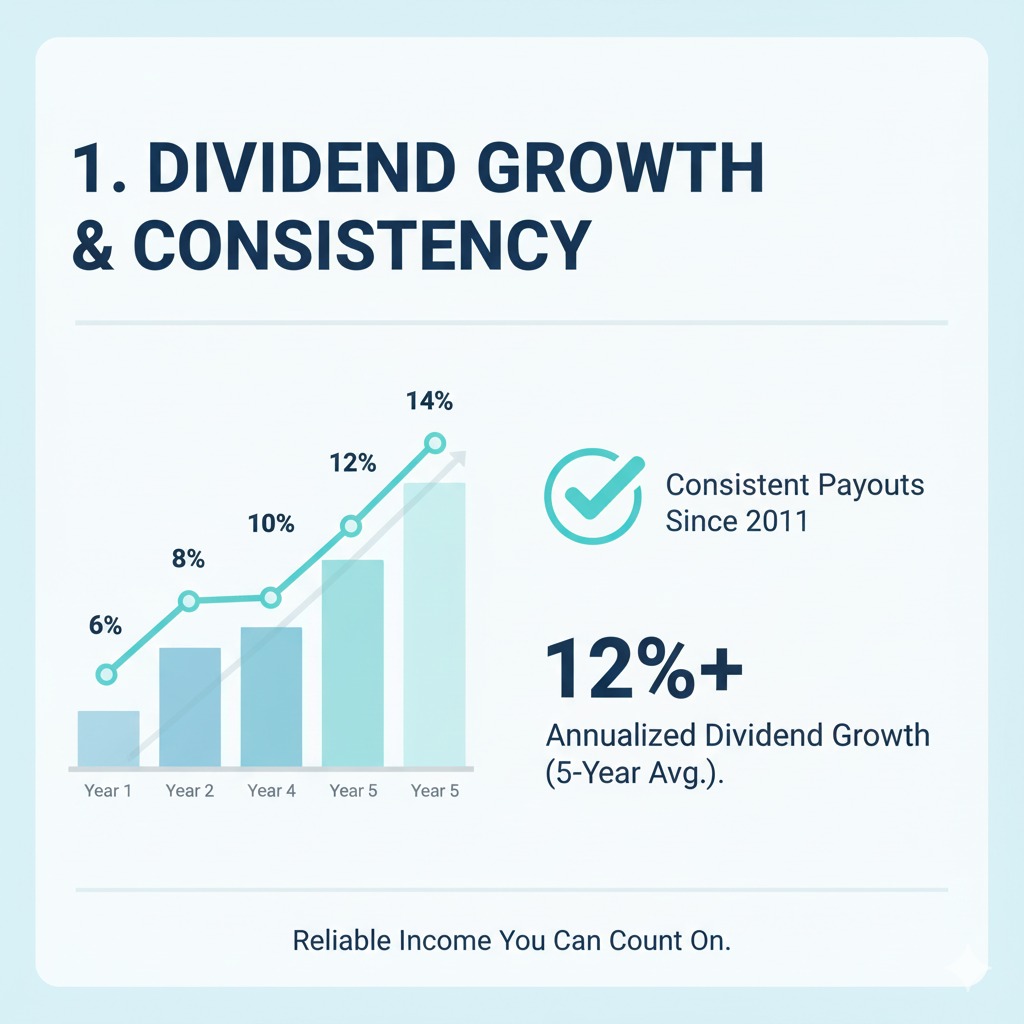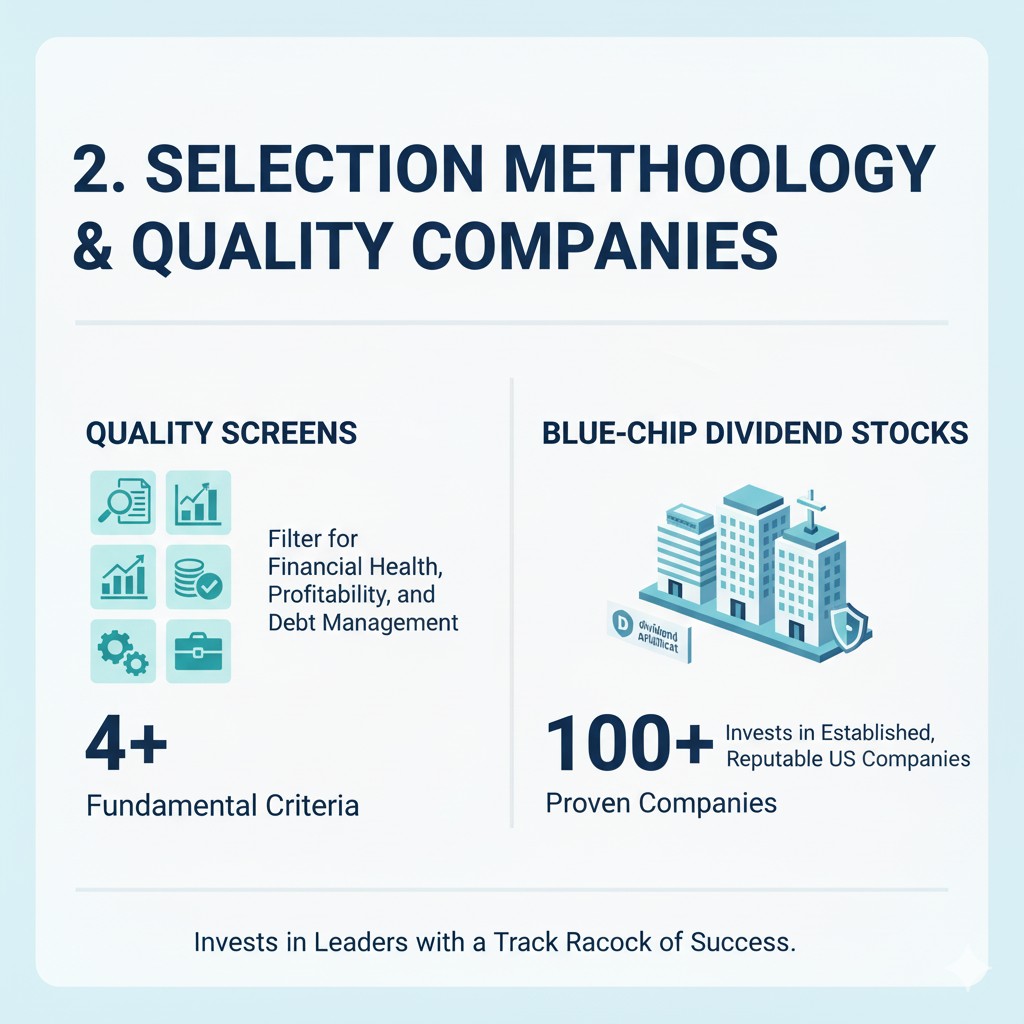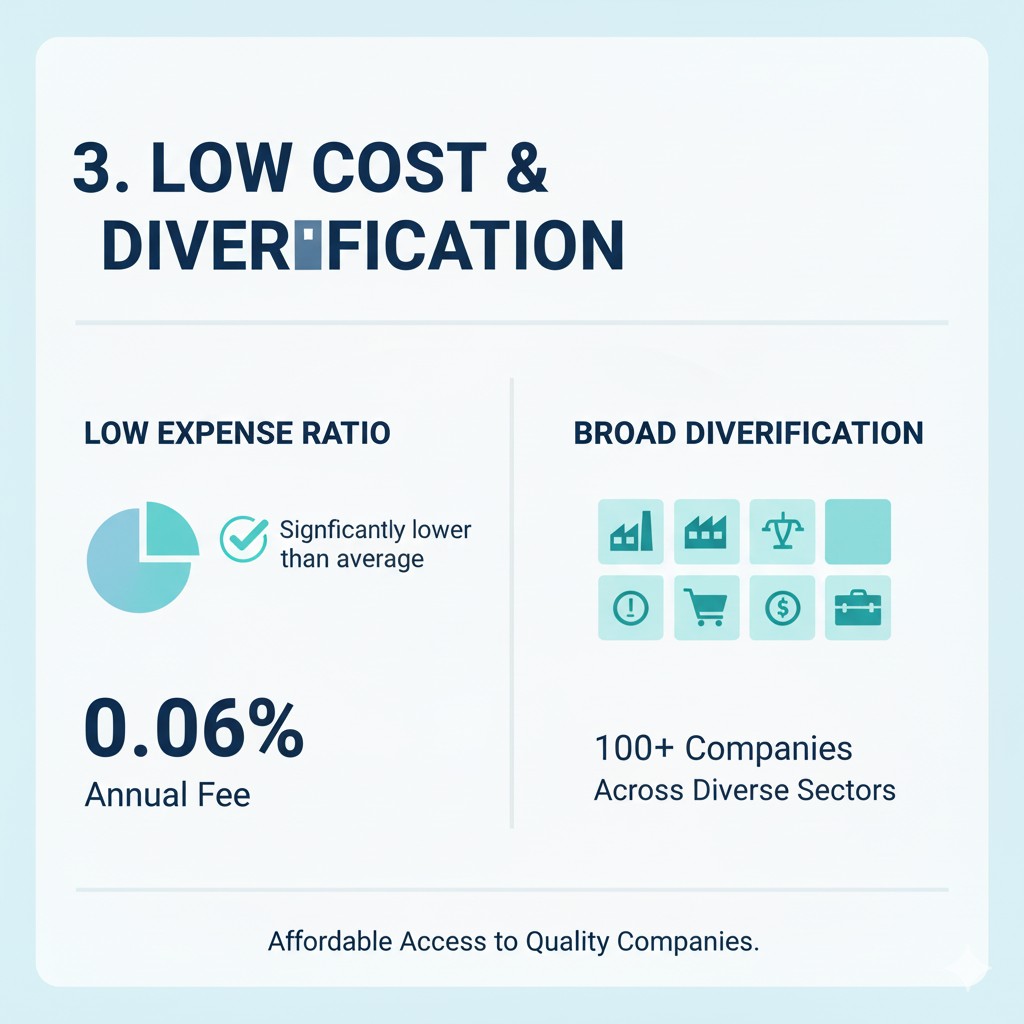Believe in Yourself
Watch your dividends
grow over time
When I first explored Dividend Growth investing, SCHD (Schwab U.S. Dividend Equity ETF) stood out as a top performer with an impressive 10.07% dividend CAGR and 8.53% annual price growth over 10 years. The real power lies in the Dividend Snowball effect—as dividends are reinvested (DRIP), the compounding steadily accelerates returns. Tracking SCHD’s performance through metrics like price, yield, and dividend payments clearly shows how reinvestment transforms modest beginnings into substantial long-term gains, making SCHD one of the most reliable ETFs for consistent growth and total return.
SCHD Calculator
Use this free tool to project the future value of your SCHD dividends and investment.
SCHD Latest Price
$75.00
SCHD Dividends
$1.03 / year (3.73% FWD yield)
Summary
Total Invested Amount
Total Dividends Received
Total Investment Value
Growth Chart
Yearly Breakdown
| Year | Annual Dividends | Monthly Dividends | Number of Shares | Investment Value |
|---|

SCHD calculator
How SCHD Dividend Calculator Works
Enter your investment details
Add your initial and extra investment amounts.
Set your preferences
Choose dividend frequency, growth rates, and time period.
Enable reinvestment
Check “Reinvest Dividends” to see compounding returns.
Click “Calculate"
Instantly view your total dividends and future portfolio value.
Calculate. Reinvest. Grow.
How to Use SCHD Dividend Calculator
Using the SCHD Dividend Calculator is simple and helps investors understand the Dividend Snowball effect over time. To get started, enter the amount of your investment, expected Dividend Growth Rate (CAGR), and the number of years you plan to hold.
The calculator will then show a clear table with details like Portfolio value, Dividend Payments, Yield, annual dividends, Number of Share, and your Total Return. What makes this tool powerful is its ability to demonstrate how compound growth works with DRIP (dividend reinvestment).
By reinvesting dividends annually, your annual performance steadily increases, and the results go far above what you might expect from just price appreciation. Whether you are tracking the 10-year history of SCHD or planning a new investment, the calculator helps you calculate long-term returns and understand how the Dividends Snowball builds wealth.
Explore smarter income options
Exploring High Yield ETFs:
From Traditional Dividends to YieldMa
When I use the SCHD Dividend Calculator, I often compare Traditional dividend ETFs like SCHD, JEPQ, and JEPI to see how steady growth aligns with my goals. These etfs usually provide a yield of about 4-8% per year, which feels reliable for building long-term income. I’ve found them useful when I want consistency, especially compared to newer options.
Lately, a different breed of high yield etfs has become more popular, often using a covered call strategy. These can deliver yeilds reaching 20%, with the first and most common example being YieldMax. While the numbers look attractive, I always test them alongside dividend calculators to understand the balance between short-term yield and sustained compounding.
Track dividends, prices, yields.
SCHD Dividend History Explained
with Payments Prices and Yields
Compare SCHD vs Other ETFs and Stocks Side by Side
When using the SCHD Dividend Calculator, I often like to compare its results with other popular ETF choices such as JEPI, JEPQ, DGRW, VOO, SPY, VTI, and VTG. Looking at the performance of these etfs and stocks side by side gives me a clearer idea of which ones fit my portfolio goals. I usually Enter the stock tickers into a comparison tool, and the form quickly helps me research my favorite stocks and ETFs.
By reviewing more than just 2 options at a time, I can weigh not only SCHD but also how other stocks and etfs perform in different markets. This process of using the stock comparison tool has made it easier for me to track growth, manage risk, and choose investments that complement my strategy.

Trusted Returns
Why SCHD Stands Out?



Explore smarter income options
SCHD Dividend Reinvestment
Snowball Strategy
When I first started learning about SCHD, I was fascinated by how a simple dividend strategy could grow into something powerful over time. Even though the yield today is closer to 3.5% based on the last 4 dividend payments and the current share price, the real magic lies in DIVIDEND GROWTH and long-term price appreciation.
This is where DRIP (Dividend Reinvestment Plan) becomes the true Snowball effect. It reminded me of the saying, “it’s not about timing the market, but about time in the market.” The more you invest and stay invested, the more your reinvestment builds momentum, creating larger total returns over time.
Here’s a clear 2-part visualization of your SCHD dividend snowball effect:
- Top chart → Portfolio value over 30 years, showing the big gap between with DRIP and without DRIP.
- Bottom chart → Dividend growth: both annual dividend income and cumulative dividends collected.
To see this in action, I often look at 2 hypothetical scenarios: Reinvesting dividends versus not reinvesting and simply spending them. For example, if you invest $10,000 into SCHD with an extra $100/month investment, and assume historic annual price increase of 7.67% and historic annual dividend increase of 11.54%, the outcome over 20 years is incredible.
Without any extra investments, your Investment of $34,000 could become a Portfolio With DRIP worth $239,621, giving a 605% total return and an Annual Dividend of $17,403. That’s a Yield on Cost of 51.19%. But if you built a Portfolio Without DRIP, it might only reach $147,258, or a 333% total return. The difference of 81.55% greater total return proves how powerful dividends reinvested can be.
Legal Disclaimer
SCHD Dividend FAQs
How much does SCHD pay in dividends per month?
SCHD (Schwab U.S. Dividend Equity ETF) pays dividends quarterly, not monthly. On average, the monthly equivalent comes to about $0.20–$0.25 per share, depending on market performance and dividend growth.
How much will $100,000 give you in dividends?
With $100,000 invested in SCHD, you can expect approximately $4,500–$5,000 in annual dividends, or about $375–$420 per month, depending on dividend growth and yield changes.
How much SCHD do I need to make $100 a month?
To earn $100 per month ($1,200 per year) from SCHD, you would need roughly $24,000–$27,000 invested, assuming a 4.5%–5% annual dividend yield.
How much does it take to make $1,000 a month in dividends?
To make $1,000 per month ($12,000 per year) in SCHD dividends, you’d need an investment of around $240,000–$270,000, based on the current yield range.
Which ETF pays the highest dividend?
Some of the highest-dividend-paying ETFs in 2025 include:
Global X SuperDividend ETF (SDIV) – yields around 10–12%
Global X SuperDividend U.S. ETF (DIV) – around 7–9%
Invesco S&P 500 High Dividend Low Volatility ETF (SPHD) – about 4–6%
Schwab U.S. Dividend Equity ETF (SCHD) – typically 3.5–4.5%
While some ETFs like SDIV pay higher yields, SCHD is often preferred for its strong growth, dividend reliability, and total return performance — not just yield.
Do I pay taxes on dividends?
Yes, you generally pay taxes on dividends received from ETFs like SCHD.
Qualified dividends (such as SCHD’s) are usually taxed at long-term capital gains rates — typically 0%, 15%, or 20%, depending on your income.
Non-qualified dividends are taxed at your regular income tax rate.
Always check your local tax laws or consult a tax professional for accurate details based on your country and filing status.
What is the SCHD dividend?
The SCHD dividend comes from the Schwab U.S. Dividend Equity ETF (ticker: SCHD) — an exchange-traded fund that invests in high-quality, dividend-paying U.S. companies. SCHD distributes dividends quarterly, and its annual dividend yield typically ranges between 3.5% and 4.5%, depending on market performance and payout growth.
Investors like SCHD for its strong dividend reliability, consistent growth history, and low management fees, making it one of the most popular dividend ETFs in the U.S.
What is a SCHD 10 year return?
Over the last decade, SCHD has delivered an average annual total return of about 12% per year, assuming dividends are reinvested.
Note: Past performance is not a guarantee of future results.